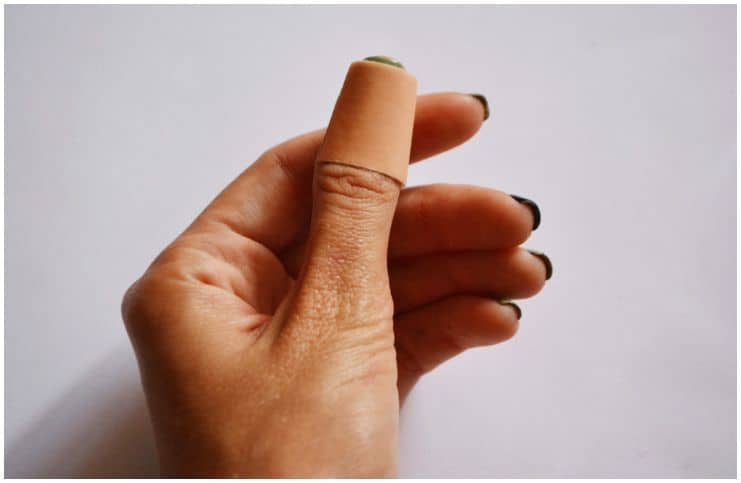Mupirocin vs Neosporin – Which Is Better To Treat Skin Infections?
Mupirocin
It is a potent antibiotic that works by stopping the growth of certain bacteria.
It is found on the WHO’s List of Essential Medicines, a list that contains the most effective and safe drugs needed in a health system.
Mupirocin is also called pseudomonic acid because its major metabolite is derived from the submerged fermentation of Pseudomonas fluorescens.
An ointment containing this antibiotic is available as the brand-name drugs Centany and Bactroban (approved by the FDA in 1987). It is also available as a generic drug.
Uses
This ointment can be used prophylactically to prevent the development of infection and promote healing in biopsy sites, minor burns, minor cuts, and other clean lesions.
It is used in particular to treat infections caused by bacteria called MRSA (methicillin-resistant Staphylococcus aureus). Infection with this bacterium primarily occurs in individuals who are already ill in the hospital.
This antibiotic is also used intranasally by patients and some people who work in hospitals to eliminate MRSA, which has colonized the inside of their nose.
Methicillin-resistant Staphylococcus aureus bacterium spread through skin-to-skin contact and frequently strikes individuals who are prone to scrapes and cuts, such as children or adults with a weak immune system.
Before using this ointment, clean and dry the affected area. Then apply a small amount of antibiotic to the area three times per day, or as directed by your healthcare provider. It is typically used for 14 days.
Watch for signs of improvement in approximately 4 days after first use. However, if your condition does not improve, see your healthcare provider.
Side Effects And Precautions
Side effects of using this antibiotic may include:
- ulcers, sores, or white spots inside the mouth;
- stinging, swelling, burning, redness, or itching on the area you used the ointment;
- nausea;
- increased pus;
- blistering, irritation, and crusting of the skin;
- tenderness, pain, and warmth on the skin;
- cracked, dry, scaly skin;
- canker sores;
- pain at first as your body adjusts to the antibiotic;
- allergic reactions, including – hives, anaphylaxis, generalized rash, or skin swelling.
Alcohol
This medicine does not affect your ability to drive safely or interact with alcohol.
This ointment should not be used on a child younger than 3 months old. If it gets in your nose, eyes, lips, and mouth, wash these areas with cool tap water.
If you are breastfeeding a child and use this antibiotic on your nipple or breast, wash the area properly before breastfeeding the child.
Tell your healthcare professional if you are pregnant or plan on getting pregnant since there are no conclusive studies about the safe use of this ointment during pregnancy and its effects on the unborn baby.
Because it contains polyethylene glycol, it is not recommended to use this ointment if you have a very large open wound, especially if you have moderate or severe renal impairment.
Important note – using this antibiotic for a long time can cause fungi or bacteria to overgrow.
Neosporin
It is a triple antibiotic ointment because it contains three antibiotics: bacitracin, neomycin, and polymyxin. It is the first-aid ointment available without a doctor’s prescription, which contains three antibiotic ingredients in a petroleum jelly base.
This ointment is easily available over the counter in most supermarkets, drug stores, and anywhere else, first aid supplies may be purchased.
Uses
Whether you have suffered a cut, burn, or other types of wound (the wound must be properly cleaned with water), this antibiotic may be applied to reduce the risk of infection.
It can be applied 2 to 5 times per day over the affected area. After, leave it exposed or cover it with dressing as directed by your healthcare provider. Do not use it in the eyes.
Side Effects And Precautions
Side effects of using this ointment may include:
- swelling;
- thinning of eyes;
- confusion;
- allergic reactions with symptoms that may include – swelling of the lips, tongue, face, and throat, as well as hives and eczema;
- premature destruction of red blood cells (blood components that transport oxygen throughout the human body);
- mouth ulcer;
- blurred vision and other eye problems (like – increased production of tears, eye surface inflammation, altered pupil size, abnormal eye sensation, and increased intraocular pressure);
- ear damage;
- fever;
- increased liver enzymes with signs that can include jaundice – a yellowish tinge to the skin;
- disorientation (alteration of mental status);
- numbness;
- skin redness;
- increased bilirubin in the blood (may indicate liver problems);
- vomiting;
- diarrhea;
- increased sensitivity to light (photophobia);
- renal injury;
- nausea;
- increased saliva production (hypersalivation);
- uncoordinated body movements.
Moreover, don’t use this antibiotic if you are allergic to any of the ingredients in this ointment.
Pregnancy & Breastfeeding
If you are pregnant or breastfeeding a baby, talk to your healthcare professional before using ointment because there are not enough studies regards its toxicity to an unborn baby or a breastfeeding infant.
Alcohol
This medicine does not affect your ability to drive safely or interact with alcohol.
Mupirocin vs Neosporin – Which Is Better To Treat Skin Infections?
Both these ointments are used for preventing and treating bacterial infections in minor wounds.
Their difference is found in the type of bacteria they combat. For instance, Neosporin is useful in infections caused by gram-negative bacteria, while Bactroban is active against gram-positive bacteria, particularly MRSA (methicillin-resistant Staphylococcus aureus).
Images credit – Shutterstock
READ THIS NEXT:
Adrafinil vs Modafinil – Which One Is Best?
References https://academic.oup.com/cid/article/62/5/618/2462707 http://www.nejm.org/doi/full/10.1056/NEJMoa003069 https://www.sciencedirect.com/topics/agricultural-and-biological-sciences/


